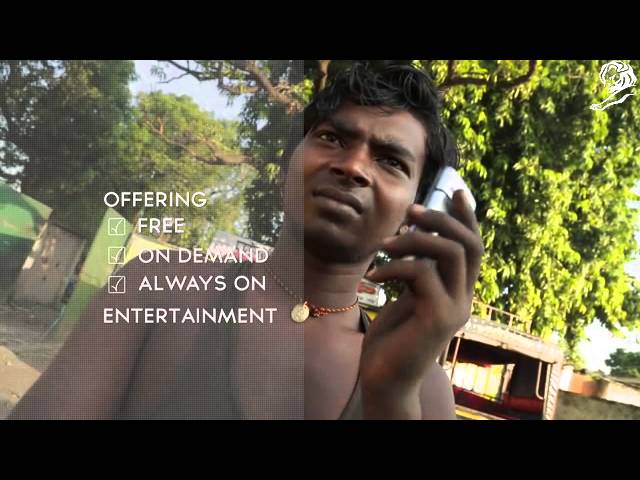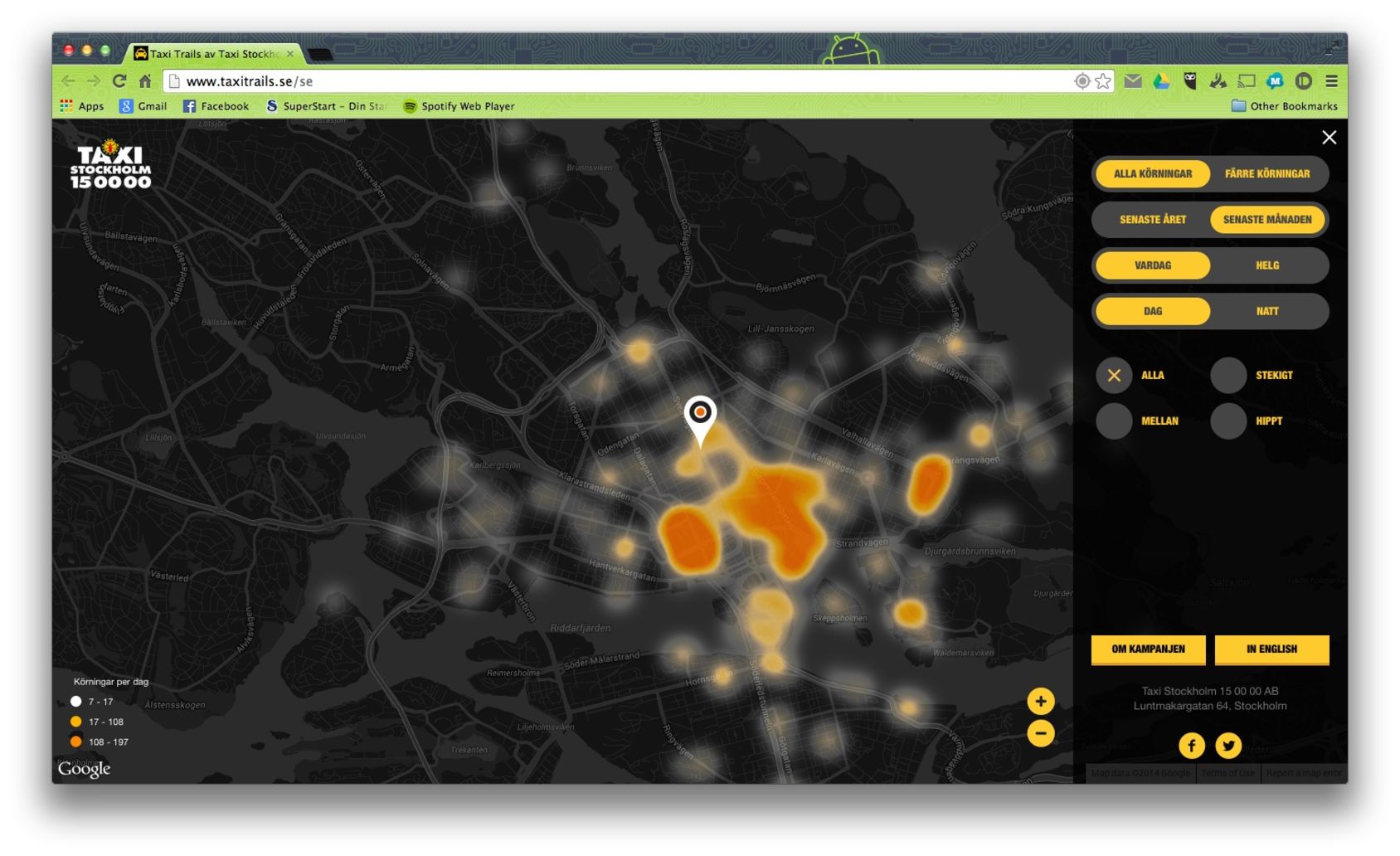8 mobile marketing campaigns that aren't annoying
Right now, more people access the web via mobile than desktop. Yet companies still aren't spending significant amounts on mobile marketing. And that's not entirely surprising.
Survey after survey shows that people find mobile ads intrusive and annoying. More and more are using ad-blocking software, which is even being baked in at network level by providers such as Three.
Nor is it easy to get consumers to download branded apps. Our phones are already full of stuff, and we know it slows down their performance, so why would we want to add any more?
In short, while the mobile audience is vast and growing, reaching it is getting extremely difficult. So in 2016, successful mobile marketing doesn't just mean paying for ads to appear, it means coming up with creative campaigns that people will actually want to engage with.
In this post, we look at eight successful mobile marketing campaigns that have done just that. We hope they help to inspire your own creative ideas for mobile marketing.
01. L'Oreal

The rise of Snapchat means more and more brands are starting to experiment with marketing via the instant messaging app. And Snapchat has provided a means to help them out, in the form of the Snapchat Lens.
Snapchat Lenses are essentially customised filters for user's selfies. So in a recent 24-hour campaign, targeted users who uploaded selfies to their account were offered the chance to see what they'd look like wearing L'Oreal makeup.
Daily design news, reviews, how-tos and more, as picked by the editors.
AdWeek reports that the filter was designed in-house with the direct help of Snapchat (who seem keen to keep agencies out of the loop of this lucrative market). The special lens allowed users to apply eyeliner to their selfie in the shape of a cat's eye, as well as mascara, foundation, blush and a lip colour.
L'Oreal's fun campaign is a textbook example of how to connect to a young audience in an instant, fuss-free way, and we're sure other beauty brands will soon follow in their footsteps.
02. Mercedes-Benz
The 'build-your-own car' device has become a mainstay of the automotive industry, but typically this functionality will live on a brand's website. But the target audience for the new Mercedes-Benz GLA was more likely to be found on social media. So Razorfish New York took it there instead.
To make it work, the agency essentially had to hack Instagram, by creating more than 200 linked accounts, and posting thousands of images representing customisable options. By visiting the Build Your Own GLA Instagram account you could then choose the colours, wheels, roof and grill of your car, just by tapping the appropriate images and prompts.
Even fun apps involve a learning curve, which can be offputting. By making 'Build Your Own GLA' as simple as Instagram (which people already know how to use), Mercedes scored top points with its target Millennials.
03. McDonalds

There's little in life that's more annoying than having your fries stolen. So McDonald's Canada introduced the Fry Defender, a security system that uses your smartphone to prevent fry theft.
A special feature of the fast-food giant's iOS and Android apps, Fry Defender turns your phone into a motion sensor. You place the phone by your food, and if someone makes a move, an alarm goes off.
Okay, so this app, created by Tribal, is not particularly serious or practical. But this fun piece of mobile marketing hits all the right notes for the brand.
04. Nivea
Geolocation is one of the most powerful functions of modern smartphones. And Nivea harnessed it to great effect in this recent campaign in Brazil.
The sun-tan lotion brand published a print magazine ad that included a tear-out-and-keep wearable technology bracelet. This could be wrapped around the arm of your child while you were on the beach.
This Nivea-branded bracelet could be synced to an app on your phone, which would tell you how far your child had wandered off. If the child strayed outside a self-appointed 'safe zone', the app would alert you and help you find your child.
This clever cross-platform campaign, masterminded by FCB Brasil, brilliantly conveys the idea that Nivea wants to protect your children, and created a huge word-of-mouth buzz around the brand.
05. Unilever

There are 104 million people in India's Bihar region, but only a fifth have TVs, print sales are small, radio frequency is unreliable, and daily power cuts can last between six to eight hours. So how were consumer goods giant Unilever to market their products?
The one light in this 'media dark' state is that 86 per cent of people own mobile phones. So the company hit upon the idea of creating a bespoke mobile radio channel to carry their ads.
The station, Kan Khajura Tesan, is free to access: mobile phone users just need to make a free call and will get a call back containing 15 minutes of free radio. This includes music, news, jokes and the latest Bollywood content, plus radio adverts for Unilever Hindustan's mass consumer brands such as Lifebuoy, Ponds and Close Up.
Within six months Kan Khajura Tesan had eight million users and Unilever's ads had been heard more than 70 million times - all at the cost of just four US cents per user. Learn more about the campaign in this video.
06. Ikea
Augmented reality is often added on to marketing campaigns as little more than a client-pleasing gimmick. But this campaign for Ikea put it to more practical use.
The world's largest furniture retailer had discovered that 14 per cent of shoppers were taking home furniture that turned out to be the wrong size for their rooms. So they launched a clever service that allows you to see exactly what a particular piece will look like in your home, before you buy it.
After you download the app, you point your device's camera at an orange cross in the IKEA catalogue, and the furniture will appear on your screen, scaled to its surroundings. The video above shows the app in action, as well as some of the silly fun that can be had with it.
It's easy to forget that smartphones are enormously powerful. This campaign shows how to harness that power in a fun way that will have the world beating a path to your door.
07. Taxi Stockholm

They say the best way to be experience a city is through the eyes of someone who lives there. But what about everybody who live there? That was the thinking behind a unique interactive map, created by Swedish agency King to promote Taxi Stockholm.
This clever "tourist guide" leverages GPS data from millions of taxi journeys around the city to create heat maps that mark out the most popular destinations. In other words, it shows not where people say they go, but where they actually go.
You can zoom in on an area to explore the places around the hotspots. Once you've settled on a destination, you can book a taxi direct from the website. You can also apply all sorts of filters and sort the GPS-data in a number of ways; for example, choose day or night, or see where the people from hip areas usually make their taxi journeys.
This brilliant branded app is a great example of how to use big data in a practical way that sheds a new perspective on the world. See the app in action here.
08. Bradesco
This ad may have been created four years ago, but we've still not seen a better example of advertising within an iPad magazine.
It looks like a normal ad for a car – in this case, the Bradesco Seguros. But when you swipe to turn the page, the car follows your finger, and crashes into the side of the page. It's only then that the concept is revealed: "Unexpected events happen without warning. Make a Bradesco car insurance plan."
Created by Spanish agency AlmapBBDO, this amusing ad does what all good mobile marketing does: play to the specific strengths of the platform and technology involved.

Tom May is an award-winning journalist specialising in art, design, photography and technology. His latest book, The 50 Greatest Designers (Arcturus Publishing), was published this June. He's also author of Great TED Talks: Creativity (Pavilion Books). Tom was previously editor of Professional Photography magazine, associate editor at Creative Bloq, and deputy editor at net magazine.


